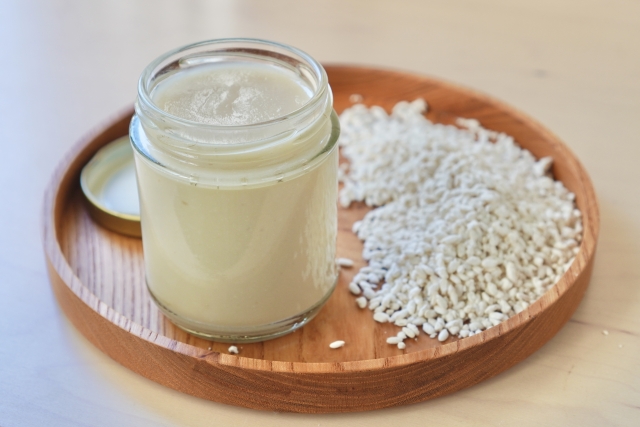Shio koji has been a staple in my kitchen for quite some time. As someone who regularly prepares fermented foods, I’ve made shio koji more times than I can count — and each batch still fascinates me. This fermented seasoning, made from just rice koji, salt, and water, continues to surprise me with its subtle flavors and versatility.
To be fair, using koji will not produce fermented food, it’s work of enzymes produced by koji mold. I use the word fermentation in broad sense, but in a strict definition, shio koji and other koji-condiments are not produced by fermentation.
In this post, I’d like to share a 5-day diary from one of my recent batches — not as a beginner’s how-to, but as an observation of the quiet, beautiful work of enzymes. Whether you’re new to shio koji or looking to deepen your own practice, I hope you’ll find some inspiration here.
This is a follow-up post to my introduction to shio koji.
Day 1: Prepping with Precision
Having made this many times, I’ve settled on a method that’s both reliable and flexible. I began by disinfecting all tools with alcohol — this is a non-negotiable step to ensure a clean production.
Here’s my go-to ratio:
- 100g dried rice koji
- 35g sea salt
- 100–120ml filtered water
Make sure salinity does not go below 13%. This helps to prevent unwanted germs and etc.
Once everything was mixed in a glass jar, the texture looked quite dry — as expected. This often worries first-timers, but with experience, I know to trust the koji. It always releases moisture over the next few days. My personal recommendation is to let koji soak up some water first. See this post for detail.
You should taste what it tastes like at the beginning (I always lick the spoon I use at the end). On your first day, I don’t think you’ll go for another scoop (which you shouldn’t. don’t let your germ get inside your jar), it’s still too salty!!
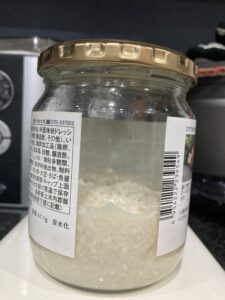
Day 2: Salt still visible
The grains had started to soften just slightly, and I stirred the mixture with a disinfected spoon, noting that everything still felt a bit coarse. Still looks a bit dry, but after mixing, you can notice some moisture coming out. It’s still too salty to enjoy the flavor for me.
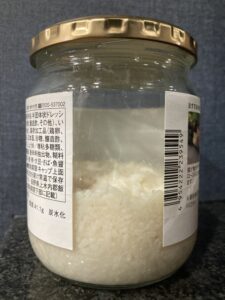
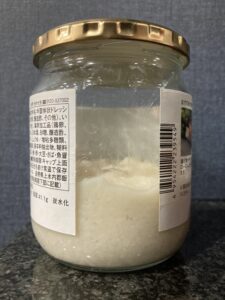
Day 3: Active Enzymes
Stirring revealed a noticeably creamier texture. This is when I start to get excited about the flavor potential. Some text books say you will spot bubbles, but I didn’t see any this time. Work of enzymes is a natural process, so it’s never the same (and that’s what fascinates me!) Don’t worry if you don’t see any bubbles. It’s worth waiting for the taste to appear…
On my 3rd day, I noticed liquid inside my jar. Like I said, trust me. Don’t put too much water and ruin your batch!
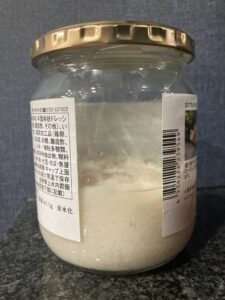
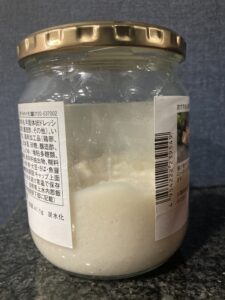
Day 4: Developing Depth
By Day 4, the mixture had transformed into a soft, cohesive mash. The moisture level was just right — no need to adjust water. The koji grains were melting into the liquid, and the smell was rich and layered. Since the dried koji is actually a grain of rice wrapped with mold, your shio koji will start to smell like steamed rice.
Many people are tempted to use it at this stage, and you absolutely can. But I usually let it go one more day for a more balanced finish.
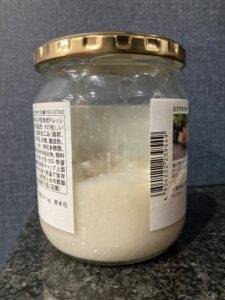

Day 5: Complete and Complex
On the final day, the shio koji had a silky, slightly grainy consistency and a beautiful mellow aroma. It tasted balanced — salty, subtly sweet, and full of umami. The room temperature was around 22~24°C throughout the process.
When you love the newly developed umami, put it in your fridge to stop (or slow down) further enzyme activity. Try to use within 3months, and when you can’t do that, you can freeze it in a zipper bag.
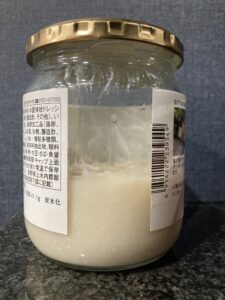
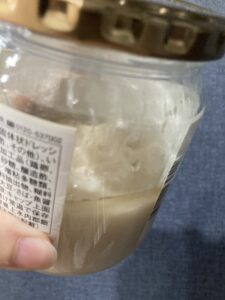
Seasoned Tips from Experience
- Moisture levels vary, but don’t panic. Even if it looks dry early on, the koji will release water naturally.
- Always sterilize your tools. One lapse can introduce mold or unwanted bacteria.
- Fermentation is sensitive to temperature. I avoid storing the jar too close to windows or heat sources.
- Stirring daily is essential. It helps distribute the salt and prevents spoilage. You don’t have to be too strict though, like strictly every 24 hours. Koji has some flexibility and tolerance.
How I Use Shio Koji Now
With so many batches under my belt, I’ve experimented with using shio koji in everything from grilled fish to pasta sauces. Here are a few of my current favorites:
- As a meat marinade — especially chicken or pork
- Stirred into miso soup for added depth
- In place of salt when seasoning vegetables
- As a secret flavor booster in rice cooker, add 1 tablespoon for 1 gou(180g) of white rice
Once you start using it, you’ll wonder how you ever cooked without it.
A Practice Worth Repeating
Even after all this time, each batch of shio koji teaches me something. The slow rhythm of daily stirring, the quiet transformation in aroma and texture — it’s a deeply grounding practice. There’s something wonderful about building a relationship with your food, watching it come to life over time.
If you’ve already made shio koji, you know what I mean. And if you’re thinking of trying it for the first time, I encourage you — it’s simpler than you think, and incredibly rewarding.
Let’s keep making, learning, and sharing.
